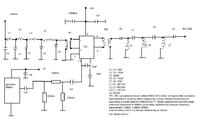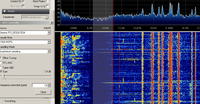I made a few NE602 or 612 converters in a symmetrical configuration, because it has a gain by 3db greater than in a non-symmetrical system. Symmetrical has 3K input and output resistance. I made the adjustment to 50ohm on transformers with a ratio of 7.75: 1. Two-hole cores obtained from baluns of television antennas. Of course, you can use other cores that will work in the range of up to 80MHz, for that at the input of the low-pass filter and the output of the high-pass. Both filters designed in RFSim99 to suck from the net for free. For this 50MHz generator. I recommend it works great. The whole structure complies with all the rules in this field. It is about matching the resistance, which is important because hardly anyone matches the impedance of the mixer to the impedance of the filters. Here you can see what the correct fit of the NE602 cube looks like in various configurations. If anyone wants, I can draw a diagram, but just download the application of this cube and everything will be clear.
http://www.electronics-tutorials.com/devices/602.htm
http://www.electronics-tutorials.com/devices/602.htm





